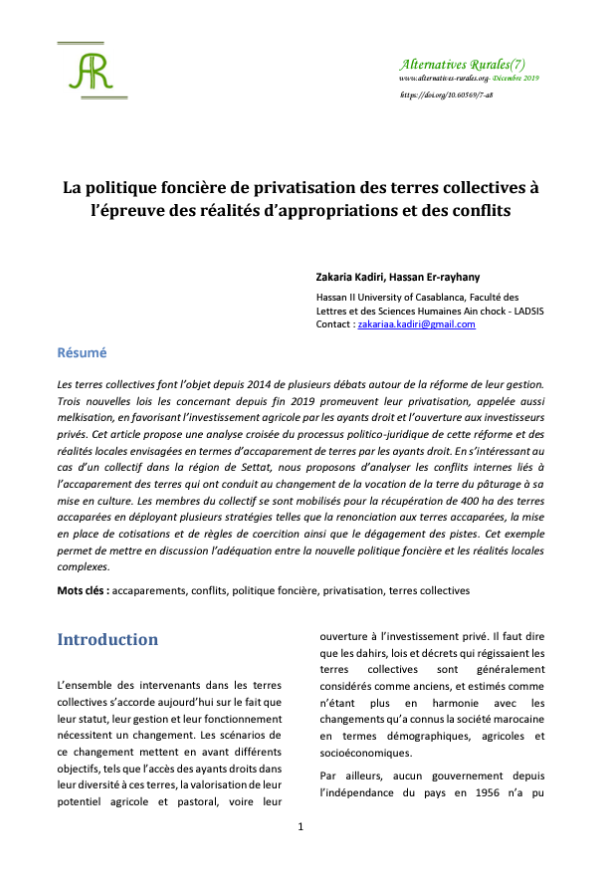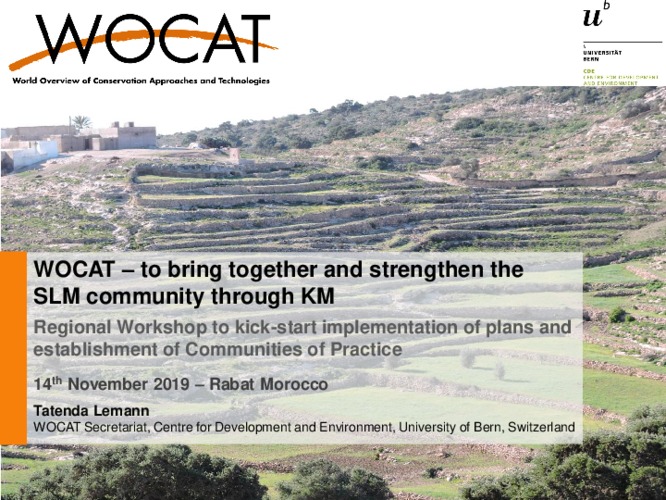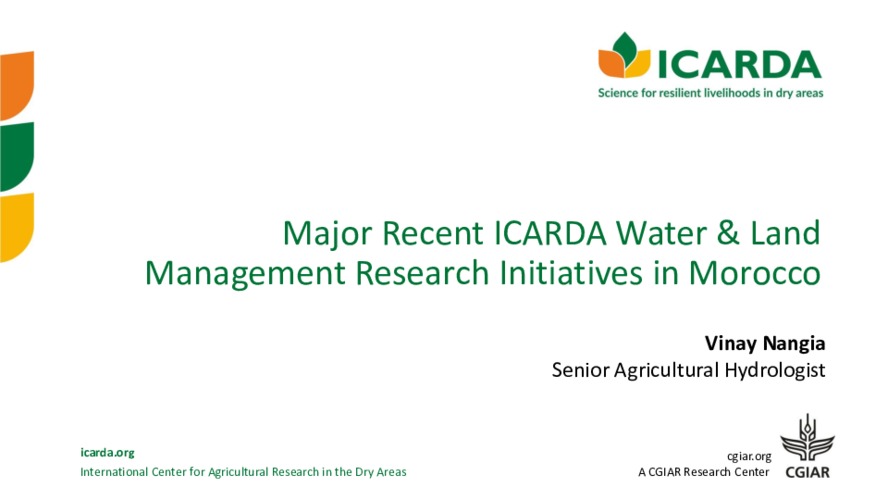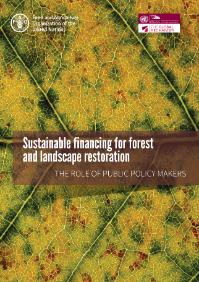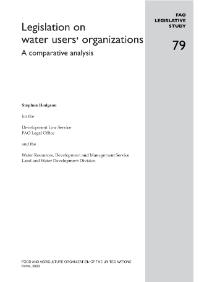The Maghreb's oases systems provide a major contribution to the region's food security, economy and natural resources. Despite this potential, oasis ecosystems are threatened by a range of complex factors related to the expansion of agricultural land and increasing scarcity of water…
La région Tanger-Tetouan-Al Hoceima située au nord-ouest du Maroc a connu, dans des dernières décennies, différents travaux d’aménagement de territoire qui ont eu, certainement, un impact sur le paysage et l’écosystème de la région. La région a accueilli des infrastructures de grandes tailles…
La sécurisation des droits fonciers a pour objectif de garantir les droits réels d’une personne sur un bien foncier. L’absence d’un régime de sécurisation fiable est un frein du développement socio-économique des pays africains. Cette étude vise la réalisation d’une comparaison entre les régimes…
Les terres collectives font l’objet depuis 2014 de plusieurs débats autour de la réforme de leur gestion. Trois nouvelles lois les concernant depuis fin 2019 promeuvent leur privatisation, appelée aussi melkisation, en favorisant l’investissement agricole par les ayants droit et l’ouverture aux…
SLM CoP Presentation given by Tatenda Lemann at the SKIM Regional Workshop in Rabat, Morocco November 14th, 2019.
This is a presentation on the functionally context socio-ecological type (fCSET) approach to support out-scaling of agricultural innovation options, and empirical analysis across three Maghreb countries (Tunisia, Algeria and Morocco). As the result, distinguished fCSETs on rain-fed and grass/…
ICARDA continued to play a critical role in the development, improvement, and dissemination of climate-resilient crop varieties last year. The varieties strengthened food and nutritional security and provided a critical defense against extreme temperatures, water scarcity, and the emergence of…
Presentation on Major Recent ICARDA Water & Land Management Research Initiatives in Morocco.
Les agrumes représentent la première culture irriguée dans la plaine de Trifa (Berkane, Maroc) avec une superficie en extension continue. Ceci accentue les pressions sur les ressources en eau déjà limitées dans la région. De ce fait, une gouvernance efficace et rationnelle de l’eau agricole s’…
Comme tout domaine vital, le domaine d’administration du foncier est un univers de discours peuplé par des termes et des concepts dont le sens et la sémantique forment un système de connaissances. L’organisation de ces connaissances est un préalable à la gestion des données foncières et…
Public policy makers from developed and developing countries, at all levels (national, regional, local), have the opportunity to take leadership as FLR financing champions. Even without controlling private capital, they can support resource mobilization in a number of ways This publication…
A robust regulatory framework for the corporate governance of water user's organizations is a fundamental ingredient of irrigation management transfer policies. The present publication offers a comparative analysis of the contemporary legislation of a wide variety of countries, providing…



